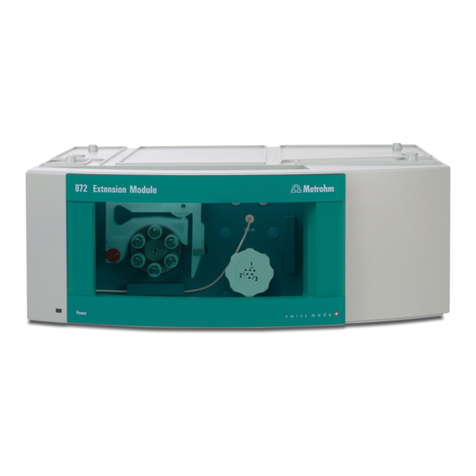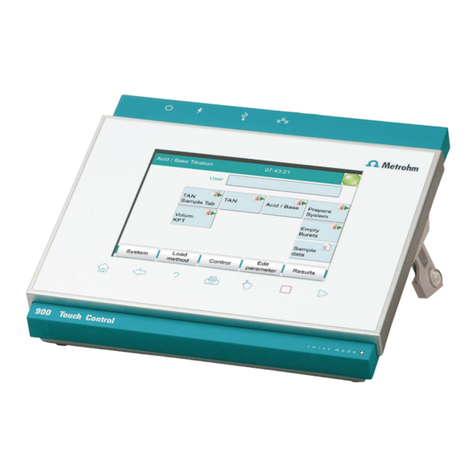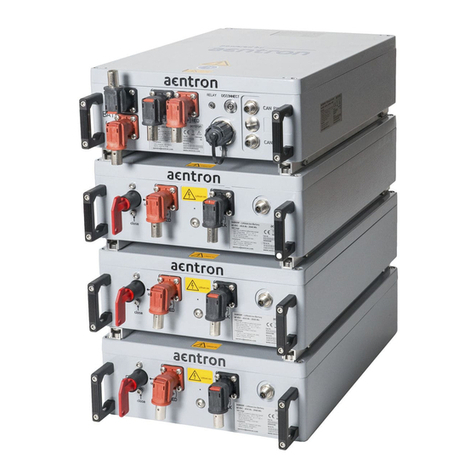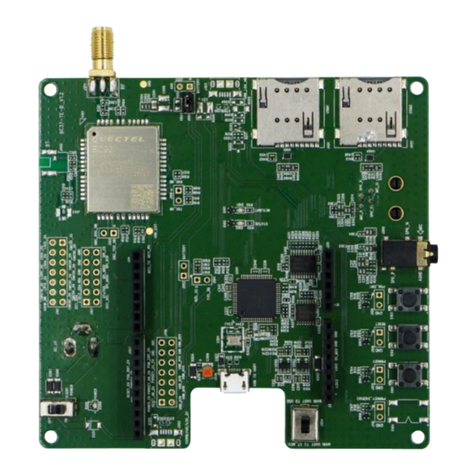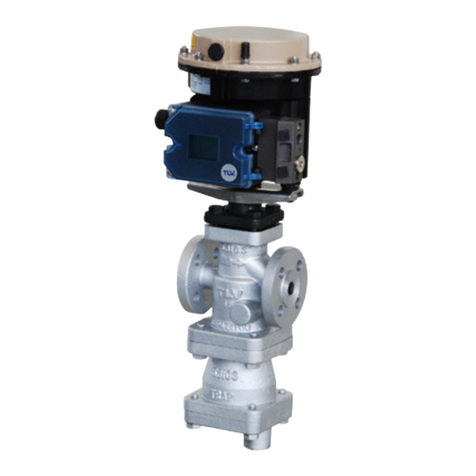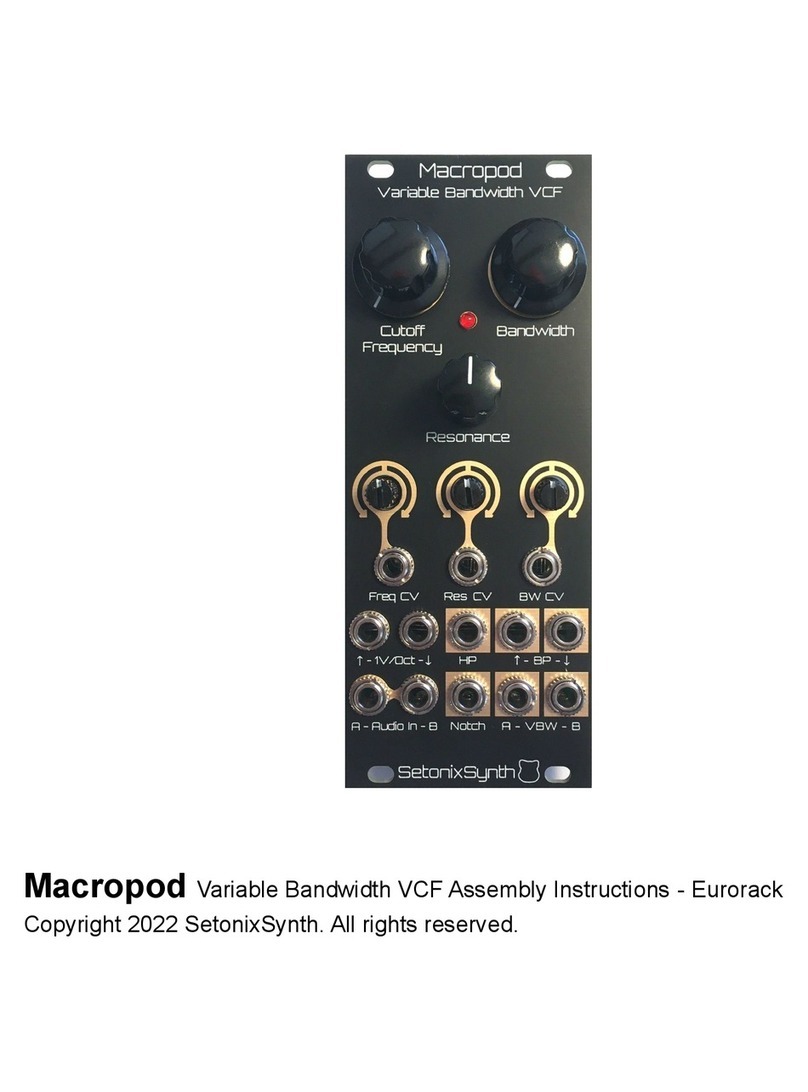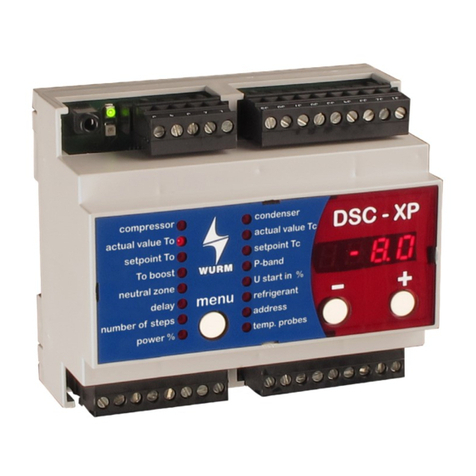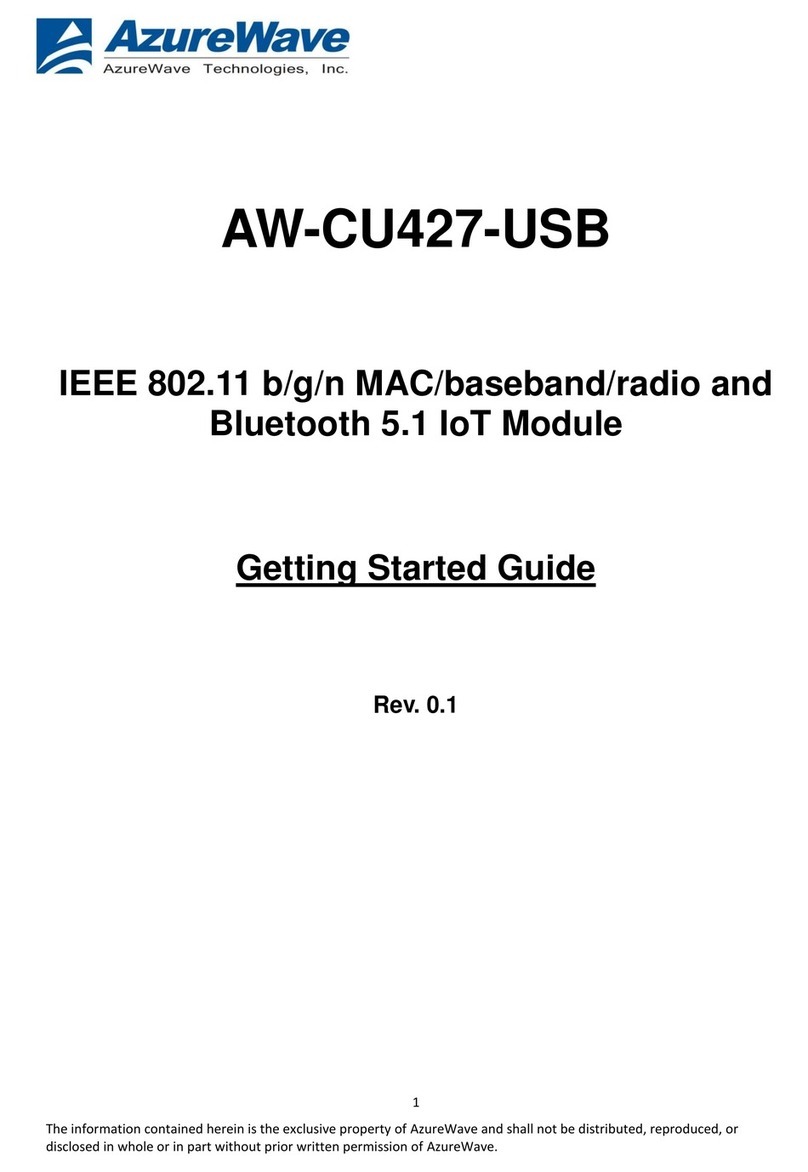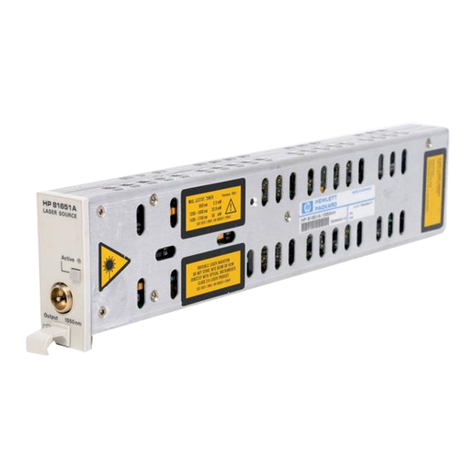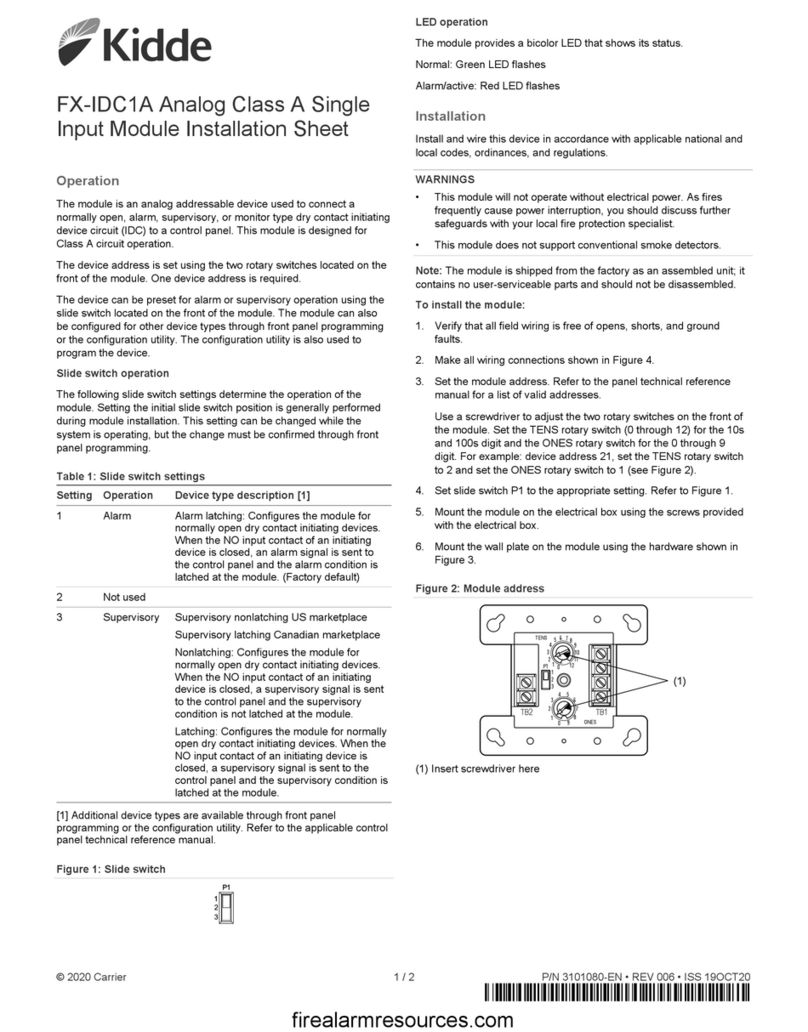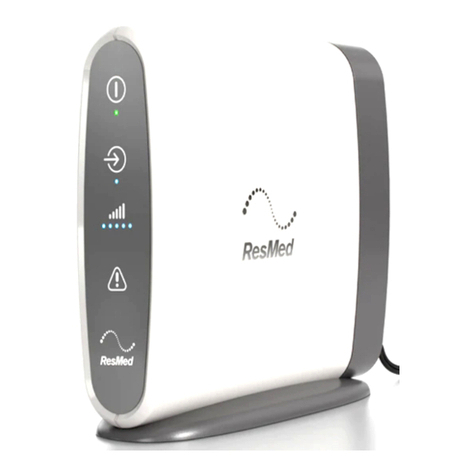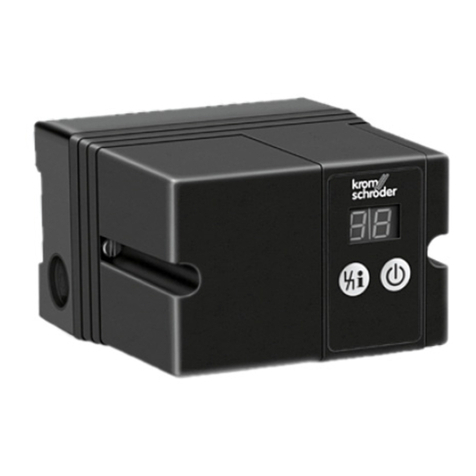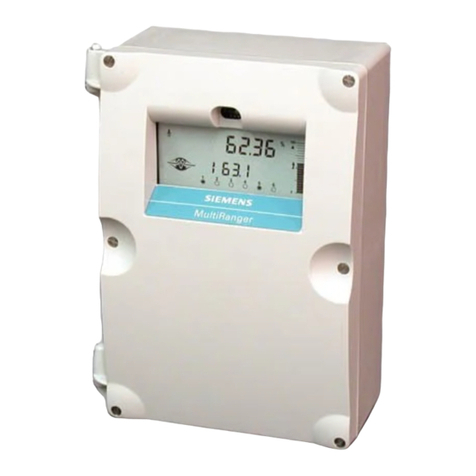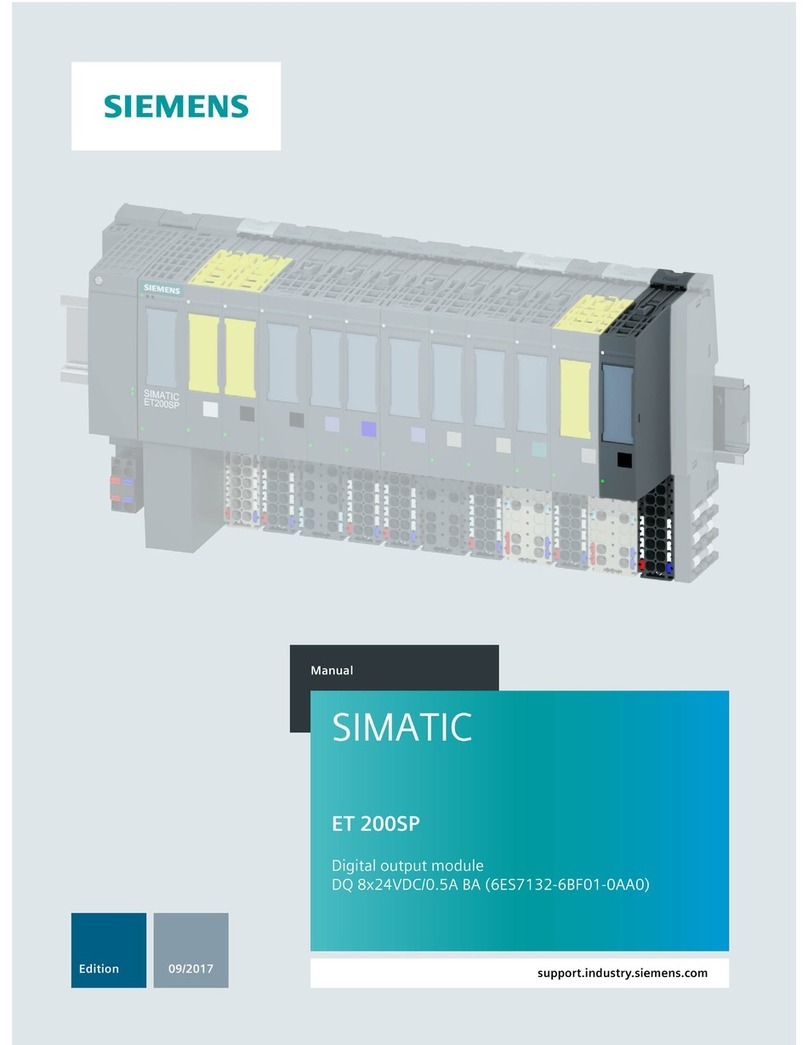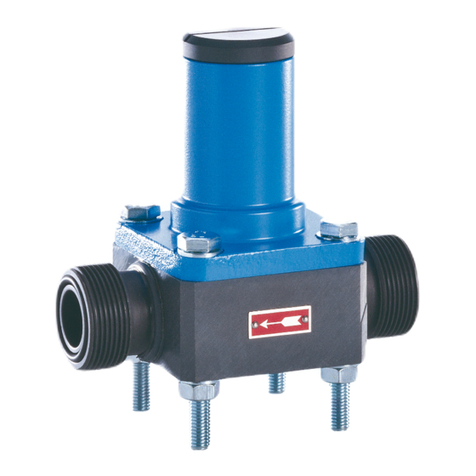Metrohm 867 pH Module User manual

867 pH Module
Manual
8.867.8003EN / 2020-03-03


Metrohm AG
CH-9100 Herisau
Switzerland
Phone +41 71 353 85 85
Fax +41 71 353 89 01
www.metrohm.com
867 pH Module
Manual
8.867.8003EN / 2020-03-03

Technical Communication
Metrohm AG
CH-9100 Herisau
This documentation is protected by copyright. All rights reserved.
This documentation has been prepared with great care. However, errors
can never be entirely ruled out. Please send comments regarding possible
errors to the address above.

■■■■■■■■■■■■■■■■■■■■■■ Table of contents
867 pH Module ■■■■■■■■ III
Table of contents
1 Introduction 1
1.1 pH Module system ................................................................ 1
1.2 Instrument description ......................................................... 2
1.3 Measuring modes and commands ...................................... 2
1.4 About the documentation ................................................... 3
1.4.1 Symbols and conventions ........................................................ 3
1.5 Safety instructions ................................................................ 4
1.5.1 General notes on safety ........................................................... 4
1.5.2 Electrical safety ........................................................................ 5
1.5.3 Working with liquids ................................................................ 6
1.5.4 Recycling and disposal ............................................................. 6
2 Overview of the instrument 7
3 Installation 9
3.1 Setting up the instrument .................................................... 9
3.1.1 Packaging ................................................................................ 9
3.1.2 Checks .................................................................................... 9
3.1.3 Location .................................................................................. 9
3.2 Connecting a controller ........................................................ 9
3.2.1 Operation ................................................................................ 9
3.3 Connecting MSB devices .................................................... 14
3.3.1 Connecting a dosing device ................................................... 15
3.3.2 Connecting a stirrer or titration stand .................................... 16
3.3.3 Connecting a Remote Box ..................................................... 17
3.4 Connecting USB devices ..................................................... 18
3.4.1 General ................................................................................. 18
3.4.2 Connecting a USB hub ........................................................... 19
3.4.3 Connecting a printer .............................................................. 19
3.4.4 Connecting a balance ............................................................ 20
3.4.5 Connecting a PC keyboard (only for operation with Touch
Control) ................................................................................. 21
3.4.6 Connecting a barcode reader ................................................. 22
3.5 Connecting sensors ............................................................ 23
3.5.1 Connecting a pH, metal or ion-selective electrode .................. 23
3.5.2 Connecting a reference electrode .......................................... 24
3.5.3 Connecting a polarizable electrode ........................................ 24
3.5.4 Connecting a temperature sensor or an electrode with inte-
grated temperature sensor ..................................................... 25
3.5.5 Connecting the iConnect ....................................................... 25

Table of contents ■■■■■■■■■■■■■■■■■■■■■■
IV ■■■■■■■■ 867 pH Module
4 Operation and maintenance 29
4.1 General notes ...................................................................... 29
4.1.1 Care ...................................................................................... 29
4.1.2 Maintenance by Metrohm Service .......................................... 29
5 Troubleshooting 30
5.1 General ................................................................................ 30
6 Appendix 32
6.1 Remote interface ................................................................ 32
6.1.1 Pin assignment of the remote interface .................................. 32
7 Technical specifications 36
7.1 Measuring interface ........................................................... 36
7.1.1 Potentiometry ........................................................................ 36
7.1.2 Temperature .......................................................................... 37
7.1.3 Polarizer ................................................................................ 37
7.2 Power connection ............................................................... 38
7.3 Ambient temperature ......................................................... 38
7.4 Reference conditions .......................................................... 38
7.5 Dimensions .......................................................................... 39
7.6 Interfaces ............................................................................. 39
8 Accessories 40
Index 41

■■■■■■■■■■■■■■■■■■■■■■ Table of figures
867 pH Module ■■■■■■■■ V
Table of figures
Figure 1 867 pH Module system ..................................................................... 1
Figure 2 Front 867 pH Module ........................................................................ 7
Figure 3 Rear 867 pH Module ......................................................................... 8
Figure 4 Connecting the Touch Control ......................................................... 10
Figure 5 Connecting the computer ................................................................ 13
Figure 6 MSB connections ............................................................................ 14
Figure 7 Connecting a dosing device ............................................................. 16
Figure 8 Connecting an MSB stirrer ............................................................... 17
Figure 9 Connecting the rod stirrer to the titration stand ............................... 17
Figure 10 Connecting the Remote Box ............................................................ 18
Figure 11 Connecting a printer ....................................................................... 20
Figure 12 Connecting a pH, metal or ion-selective electrode ........................... 23
Figure 13 Connecting a reference electrode .................................................... 24
Figure 14 Connecting a polarizable electrode .................................................. 24
Figure 15 Connecting a temperature sensor or an electrode with integrated tem-
perature sensor ............................................................................... 25
Figure 16 Plugging in the mini USB adapter cable ........................................... 26
Figure 17 Plugging in the 854 iConnect .......................................................... 26
Figure 18 Removing the protective cap ........................................................... 27
Figure 19 Aligning the guide pin ..................................................................... 27
Figure 20 Attaching the electrode ................................................................... 27
Figure 21 Unplugging the 854 iConnect ......................................................... 28
Figure 22 Connectors of the Remote Box ........................................................ 32
Figure 23 Pin assignment of remote socket and remote plug ........................... 32


■■■■■■■■■■■■■■■■■■■■■■ 1 Introduction
867 pH Module ■■■■■■■■ 1
1 Introduction
1.1 pH Module system
MSB
Controller
PC Keyboard
Barcode
Reader
USB/RS-232 Converter
Touch Control
USB Sample Processor
Robotic Titrosampler
USB Hub
Relay Box
Remote Box
Balance
Dosing Interface
Dosino
Stirrer / Ti Stand
Dosimat
On
Status
Titrando
USB
Cond. cell
Sensors
Printer
Tower-PC
867 pH Module
Figure 1 867 pH Module system

1.2 Instrument description ■■■■■■■■■■■■■■■■■■■■■■
2■■■■■■■■ 867 pH Module
1.2 Instrument description
The 867 pH Module has the following characteristics:
■Operation
A touch-screen Touch Control or a high-performance PC software is
used for operation.
■Dosing
Dosinos and Dosimats can be used for dosing. Dosing is required for
standard additions and when auxiliary solutions are to be dosed.
■MSB connectors
Four MSB connectors (Metrohm Serial Bus) for connecting dosing devi-
ces (Dosimat with exchange unit or Dosino with dosing unit), stirrers
and Remote Boxes.
■USB connectors
Two USB connectors, with which devices such as printers, PC key-
boards, barcode readers or additional control instruments (USB Sample
Processor, Titrando, Dosing Interface, etc.) can be connected.
■Measuring interface
One measuring input each for:
– a potentiometric electrode (pH, metal or ion-selective electrode)
– a separate reference electrode
– a temperature sensor (Pt1000 or NTC)
– a polarizable electrode
– an iConnect (measuring interface for electrodes with integrated
data chip, so-called iTrodes)
1.3 Measuring modes and commands
The following measuring modes and commands are supported:
■MEAS
The following measuring modes can be selected for measurements:
–pH (pH measurement)
–U (potentiometric voltage measurement)
–T (temperature measurement)
–Ipol (voltametric measurement with selectable polarization cur-
rent)
–Upol (amperometric measurement with selectable polarization
voltage)
–Conc (concentration measurement)

■■■■■■■■■■■■■■■■■■■■■■ 1 Introduction
867 pH Module ■■■■■■■■ 3
■STDADD
The measuring modes for standard addition are listed separately only in
tiamo™. In Touch Control they are integrated in the measuring mode
MEAS Conc.
The following measuring modes can be selected for measurements:
–auto (automatic addition of the standard addition solution by
specifying a potential difference)
–dos (automatic addition of the standard addition solution by
specifying the individual volume increments)
–man (manual addition of the standard addition solution)
■CAL
Electrode calibration.
Measuring mode:
–pH (calibration of pH electrodes)
–Conc (calibration of ion-selective electrodes)
■ELT
Electrode test for pH electrodes.
This mode is listed separately only in tiamo™. In Touch Control, the
electrode test is part of the CAL calibration mode.
■Dosing commands
The following commands for dosing can be selected:
–PREP (rinsing the cylinder and tubings of an exchange unit or
dosing unit)
–EMPTY (emptying the cylinder and tubings of a dosing unit)
–ADD (dosing a specified volume)
–LQH (carrying out complex dosing tasks with a Dosino)
1.4 About the documentation
CAUTION
Please read through this documentation carefully before putting the
instrument into operation. The documentation contains information
and warnings which the user must follow in order to ensure safe opera-
tion of the instrument.
1.4.1 Symbols and conventions
The following symbols and formatting may appear in this documentation:
Cross-reference to figure legend
The first number refers to the figure number, the sec-
ond to the instrument part in the figure.

1.5 Safety instructions ■■■■■■■■■■■■■■■■■■■■■■
4■■■■■■■■ 867 pH Module
Instruction step
Carry out these steps in the sequence shown.
Method Dialog text, parameter in the software
File ▶ New Menu or menu item
[Next] Button or key
WARNING
This symbol draws attention to a possible life-threat-
ening hazard or risk of injury.
WARNING
This symbol draws attention to a possible hazard due
to electrical current.
WARNING
This symbol draws attention to a possible hazard due
to heat or hot instrument parts.
WARNING
This symbol draws attention to a possible biological
hazard.
CAUTION
This symbol draws attention to possible damage to
instruments or instrument parts.
NOTE
This symbol highlights additional information and
tips.
1.5 Safety instructions
1.5.1 General notes on safety
WARNING
Operate this instrument only according to the information contained in
this documentation.
This instrument left the factory in a flawless state in terms of technical
safety. To maintain this state and ensure non-hazardous operation of the
instrument, the following instructions must be observed carefully.

■■■■■■■■■■■■■■■■■■■■■■ 1 Introduction
867 pH Module ■■■■■■■■ 5
1.5.2 Electrical safety
The electrical safety when working with the instrument is ensured as part
of the international standard IEC 61010.
WARNING
Only personnel qualified by Metrohm are authorized to carry out service
work on electronic components.
WARNING
Never open the housing of the instrument. The instrument could be
damaged by this. There is also a risk of serious injury if live components
are touched.
There are no parts inside the housing which can be serviced or replaced
by the user.
Supply voltage
WARNING
An incorrect supply voltage can damage the instrument.
Only operate this instrument with a supply voltage specified for it (see
rear panel of the instrument).
Protection against electrostatic charges
WARNING
Electronic components are sensitive to electrostatic charges and can be
destroyed by discharges.
Do not fail to pull the power cord out of the power socket before you
set up or disconnect electrical plug connections at the rear of the
instrument.

1.5 Safety instructions ■■■■■■■■■■■■■■■■■■■■■■
6■■■■■■■■ 867 pH Module
1.5.3 Working with liquids
CAUTION
Periodically check all system connections for leaks. Observe the relevant
regulations in respect to working with flammable and/or toxic fluids
and their disposal.
1.5.4 Recycling and disposal
This product is covered by European Directive 2012/19/EU, WEEE – Waste
Electrical and Electronic Equipment.
The correct disposal of your old instrument will help to prevent negative
effects on the environment and public health.
More details about the disposal of your old instrument can be obtained
from your local authorities, from waste disposal companies or from your
local dealer.

■■■■■■■■■■■■■■■■■■■■■■ 2 Overview of the instrument
867 pH Module ■■■■■■■■ 7
2 Overview of the instrument
Figure 2 Front 867 pH Module
1"On" LED
Lights up when the pH Module is ready for
operation.

■■■■■■■■■■■■■■■■■■■■■■
8■■■■■■■■ 867 pH Module
Figure 3 Rear 867 pH Module
1Electrode connector (Ind.)
For connecting pH, metal or ion-selective
electrodes with integrated or separate refer-
ence electrode. Socket F.
2Electrode connector (Ref.)
For connecting reference electrodes, e.g.
Ag/AgCl reference electrode. Socket B,
4 mm.
3Temperature sensor connector (Temp.)
For connecting temperature sensors (Pt1000
or NTC). Two B sockets, 2 mm.
4Electrode connector (Pol.)
For connecting polarizable electrodes, e.g.
double Pt wire electrodes. Socket F.
5Electrode connector (iConnect)
For connecting electrodes with integrated
data chip (iTrodes).
6Connector (Controller)
For connecting a Touch Control or a PC with
installed PC software. Mini DIN, 9-pin.
7USB connector (USB 1 and USB 2)
USB ports (type A) for connecting printer,
keyboard, barcode reader, USB Sample Pro-
cessor, etc.
8Type plate
Contains specifications concerning supply
voltage, instrument type and serial number.
9Power socket 10 MSB connector (MSB 1 to MSB 4)
Metrohm Serial Bus. For connecting external
dosing devices, stirrers or Remote Boxes.
Mini DIN, 9-pin.

■■■■■■■■■■■■■■■■■■■■■■ 3 Installation
867 pH Module ■■■■■■■■ 9
3 Installation
3.1 Setting up the instrument
3.1.1 Packaging
The instrument is supplied in protective packaging together with the sepa-
rately packed accessories. Keep this packaging, as only this ensures safe
transportation of the instrument.
3.1.2 Checks
Immediately after receipt, check whether the shipment has arrived com-
plete and without damage by comparing it with the delivery note.
3.1.3 Location
The instrument has been developed for operation indoors and may not be
used in explosive environments.
Place the instrument in a location of the laboratory which is suitable for
operation and free of vibrations and which provides protection against
corrosive atmosphere and contamination by chemicals.
The instrument should be protected against excessive temperature fluctua-
tions and direct sunlight.
3.2 Connecting a controller
3.2.1 Operation
Two different versions are available for operating the 867 pH Module:
■A Touch Control with touch-sensitive screen. It forms a "stand-alone
instrument" together with the 867 pH Module.
■A computer enables operation of the 867 pH Module with the help of
a PC software, e.g. tiamo.
CAUTION
Take care to ensure that the power cord is pulled out of the power
socket before either setting up or disconnecting connections between
the instruments.

3.2 Connecting a controller ■■■■■■■■■■■■■■■■■■■■■■
10 ■■■■■■■■ 867 pH Module
3.2.1.1 Connecting a Touch Control
NOTICE
The plug is protected against accidental disconnection of the cable by
means of a pull-out protection feature. If you wish to pull out the plug,
you first need to pull back the outer plug sleeve marked with arrows.
Connect the Touch Control as follows:
1■Insert the plug of the Touch Control connection cable into the
Controller socket.
Figure 4 Connecting the Touch Control
2■Connect the MSB devices (see chapter 3.3, page 14).
■Connect the USB devices (see chapter 3.4, page 18).
3■Connect the pH Module to the power grid (see chapter 3.2.1,
page 9).
4■Switch on the Touch Control.
The Touch Control power supply is supplied through the pH Module.
Automatic system tests are performed on both instruments at the
time of activation. The On LED on the front of the pH Module lights
up when the system test has been completed and the instrument is
ready for operation.

■■■■■■■■■■■■■■■■■■■■■■ 3 Installation
867 pH Module ■■■■■■■■ 11
CAUTION
The Touch Control must be shut down properly by deactivation with the
power switch on the rear of the instrument before the power supply is
interrupted. If this is not done, then there is a danger of data loss.
Because of the fact that the power supply for the Touch Control is pro-
vided through the pH Module, you must never disconnect the pH Mod-
ule from the power grid (e.g. by deactivating with a connector strip)
before you have deactivated the Touch Control.
If you would prefer not to position the Touch Control directly next to the
pH Module, then you can lengthen the connection with the 6.2151.010
cable. The maximum connection length permitted is 5 m.
3.2.1.2 Connecting the instrument to the power grid
WARNING
Electric shock from electrical potential
Risk of injury by touching live components or through moisture on live
parts.
■Never open the housing of the instrument while the power cord is
still connected.
■Protect live parts (e.g. power supply unit, power cord, connection
sockets) against moisture.
■Unplug the power plug immediately if you suspect that moisture has
gotten inside the instrument.
■Only personnel who have been issued Metrohm qualifications may
perform service and repair work on electrical and electronic parts.
Connecting the power cord
Accessories Power cord with the following specifications:
■Length: max. 2 m
■Number of cores: 3, with protective conductor
■Instrument plug: IEC 60320 type C13
■Conductor cross-section 3x min. 0.75 mm2 / 18 AWG
■Power plug:
– according to customer requirement (6.2122.XX0)
– min. 10 A

3.2 Connecting a controller ■■■■■■■■■■■■■■■■■■■■■■
12 ■■■■■■■■ 867 pH Module
NOTICE
Do not use a not permitted power cord!
1Plugging in the power cord
■Plug the power cord into the instrument's power socket.
■Connect the power cord to the power grid.
3.2.1.3 Connecting a computer
The 867 pH Module requires a USB connection to a computer in order to
be able to be controlled by a computer software. Using a 6.2151.000
controller cable, the instrument can be connected directly, either to a USB
socket on a computer, to a connected USB hub or to a different Metrohm
control instrument.
You need administrator rights for the installation of driver software and
control software on your computer.
Cable connection and driver installation
A driver installation is required in order to ensure that the 867 pH Module
is recognized by the computer software. To accomplish this, you must
comply with the procedures specified. The following steps are necessary:
1Install the software
■Insert the computer software installation CD and carry out the
installation program directions.
■Exit the program if you have started it after the installation.
2Establishing the cable connections
■Connect all peripheral devices to the instrument, see chapter 3.3,
page 14.
■Connect the instrument to the power grid if you have not already
done this (see chapter 3.2.1.2, page 11).
The "On" LED on the 867 pH Module is not yet illuminated!
■Connect the instrument to a USB connector (type A) of your com-
puter (see manual of your computer). The 6.2151.000 cable is
used for this purpose.
Table of contents
Other Metrohm Control Unit manuals
